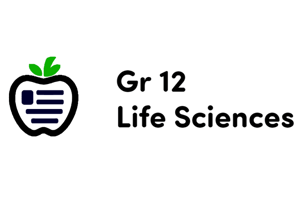Podcast
Questions and Answers
Which of the following is NOT a type of passive defence mechanism that plants use against pathogen invasion?
Which of the following is NOT a type of passive defence mechanism that plants use against pathogen invasion?
- Chemical receptors (correct)
- Bark
- Small stomata
- Thick cuticle
Which of the following is an example of a chemical barrier that can reduce fungal and bacterial growth in plants?
Which of the following is an example of a chemical barrier that can reduce fungal and bacterial growth in plants?
- Saponins (correct)
- Thick cuticle
- Cell walls
- Small stomata
What is the purpose of vertical hanging leaves in plants?
What is the purpose of vertical hanging leaves in plants?
- To reduce the likelihood of pathogen reservoirs building up on the outside of leaves (correct)
- To provide a food source for pathogens
- To allow for better water regulation in the plant
- To increase the likelihood of pathogen invasion
What is the difference between passive and active plant defences against pathogens?
What is the difference between passive and active plant defences against pathogens?
What is the role of stomata in plant defence against pathogens?
What is the role of stomata in plant defence against pathogens?
Explain the difference between passive and active plant defences against pathogens.
Explain the difference between passive and active plant defences against pathogens.
What is the role of the cuticle in plant defence against pathogens?
What is the role of the cuticle in plant defence against pathogens?
What is the purpose of bark in plant defence against pathogens?
What is the purpose of bark in plant defence against pathogens?
What are stomata and how do they affect plant defence against pathogens?
What are stomata and how do they affect plant defence against pathogens?
What are PAMPs and how do they activate plant defence mechanisms?
What are PAMPs and how do they activate plant defence mechanisms?
What is the role of chemical compounds in plant defence against pathogens?
What is the role of chemical compounds in plant defence against pathogens?
How do vertical hanging leaves reduce the likelihood of pathogen reservoirs building up on the outside of leaves?
How do vertical hanging leaves reduce the likelihood of pathogen reservoirs building up on the outside of leaves?
What are glucosides and saponins and how do they contribute to plant defence against pathogens?
What are glucosides and saponins and how do they contribute to plant defence against pathogens?
How do plants produce enzymes that break down pathogen-derived toxins?
How do plants produce enzymes that break down pathogen-derived toxins?
What is the complex interaction between plants and pathogens that determines disease resistance?
What is the complex interaction between plants and pathogens that determines disease resistance?
Plants have inherent disease-resistance strategies that may be passive or ______
Plants have inherent disease-resistance strategies that may be passive or ______
If a plant can prevent a pathogen from invading its tissue, or prevent the pathogen from reproducing, then it will be resistant to that ______
If a plant can prevent a pathogen from invading its tissue, or prevent the pathogen from reproducing, then it will be resistant to that ______
Plants have two major types of passive defences against pathogen invasion: physical barriers and ______ barriers
Plants have two major types of passive defences against pathogen invasion: physical barriers and ______ barriers
Bark offers plants extra protection against pathogens that otherwise might invade and try to reach the food source, sap, in the ______ beneath the tree bark
Bark offers plants extra protection against pathogens that otherwise might invade and try to reach the food source, sap, in the ______ beneath the tree bark
Stomata tend to open during humid weather and rainstorms, which helps regulate water balance in the plant, but is also a potential ______ of entry for pathogens
Stomata tend to open during humid weather and rainstorms, which helps regulate water balance in the plant, but is also a potential ______ of entry for pathogens
Chemical receptors on plant cells can detect the presence of a pathogen and ______ the next stage of defence
Chemical receptors on plant cells can detect the presence of a pathogen and ______ the next stage of defence
Examples of chemicals that can reduce fungal and bacterial growth in plants are ______ and saponins
Examples of chemicals that can reduce fungal and bacterial growth in plants are ______ and saponins
Plants may also produce ______ that break down pathogen-derived toxins
Plants may also produce ______ that break down pathogen-derived toxins
Flashcards are hidden until you start studying




